 Replacing the countertops in your home is a great way to revamp any space. The options are almost limitless – so where is one supposed to start?! If you’re considering redoing the countertops in your home, read on for a few things to keep in mind to get the process started.
Replacing the countertops in your home is a great way to revamp any space. The options are almost limitless – so where is one supposed to start?! If you’re considering redoing the countertops in your home, read on for a few things to keep in mind to get the process started.
1. Determine How Much Material You Need
The first thing you should do before choosing an new countertop is determine how big your countertop actually is or will need to be. Once you know the square footage you’re working with, you can select a material that fits within your budget. To find the square footage, measure the length and width of the surface and then multiply them together. Now, this measurement assumes that you’re dealing with a perfect square or rectangle, which is rarely the case. For irregular shapes, add or subtract areas together to get your final square footage. Make sure to allow for some wiggle room in your measurements. You don’t want to be short on material!
2. Choosing the Right Material
There are a few different approaches to this tip. Your new countertop material needs to not only fit with the design of the space, but it also needs to work within your budget and offer you the functionality you’re looking for. With so many options (quartz, granite, marble, and limestone – just to name a few), it’s crucial that you are aware of your options before you buy.
Function – Countertop Maintenance and Durability
Depending on where your new countertop is going to be installed, different materials will suit your needs better. Think about the difference between a bathroom or a kitchen countertop. In a bathroom, you need to make sure your countertop can withstand constant moisture, while in a kitchen, you need something that will be durable and withstand stains and scratches.
Design – Countertop Style and Aesthetics
It’s important to choose a countertop material that matches the look and feel of your space. If you have a more traditional style kitchen, you may want to stay away from more modern options, and vice versa. Countertops are not something that you change regularly, so it’s recommended you opt for a more timeless look. This is especially important if you plan on selling or renting out your home, as you’ll want to stick with a material and color that has a broad appeal.
3. Edging Options
There are a number of different edging options to choose from – each one offers it’s own small addition to the overall look and feel of your space. The most common edge is a squared edge. These are found on standard countertops and look great in traditional or modern spaces. Decorative edges, such as radius, bullnose, bevel and egg, are a great way to add a custom touch; however, decorative edges are generally more expensive and aren’t available on all countertop materials.
If you are interested in redoing your countertops, contact the team at Stoneworks Granite and Quartz. Our selection of natural stone options is sure to impress. Call us for a free quote today!


 The industry standard for kitchen countertops is 36 inches, or 3 feet. This is generally the optimal and most ergonomic height; however, just because this is the industry standard, doesn’t mean it’s right for everyone! We come in all shapes and sizes, so it makes sense our countertops should do the same. Varying counter heights in a kitchen can make certain tasks easier, while also adding to the visual appeal of your kitchen. Read on to learn why you should consider adding some levels to your next
The industry standard for kitchen countertops is 36 inches, or 3 feet. This is generally the optimal and most ergonomic height; however, just because this is the industry standard, doesn’t mean it’s right for everyone! We come in all shapes and sizes, so it makes sense our countertops should do the same. Varying counter heights in a kitchen can make certain tasks easier, while also adding to the visual appeal of your kitchen. Read on to learn why you should consider adding some levels to your next  Natural stone tile
Natural stone tile 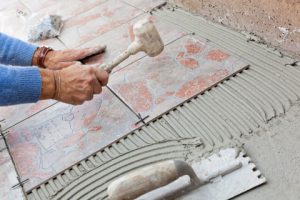 Caring for and maintaining a natural stone floor is different from other flooring options. To ensure that your natural stone floor provides you with a lifetime of beauty and value, a proper maintenance program is necessary. The good news is that stone floor maintenance isn’t tough! In fact, you probably have all the materials you need sitting in your cleaning closet at home. Read on to learn the basics of caring for your
Caring for and maintaining a natural stone floor is different from other flooring options. To ensure that your natural stone floor provides you with a lifetime of beauty and value, a proper maintenance program is necessary. The good news is that stone floor maintenance isn’t tough! In fact, you probably have all the materials you need sitting in your cleaning closet at home. Read on to learn the basics of caring for your  You’re going to be in your bathroom every single day, so it’s important that it you enjoy spending time in there! Your bathroom should be a place of comfort; it should act as both a place to relax after a hard day and get ready efficiently during a hectic morning. Read on for 5 signs that your bathroom may be in need of an update.
You’re going to be in your bathroom every single day, so it’s important that it you enjoy spending time in there! Your bathroom should be a place of comfort; it should act as both a place to relax after a hard day and get ready efficiently during a hectic morning. Read on for 5 signs that your bathroom may be in need of an update.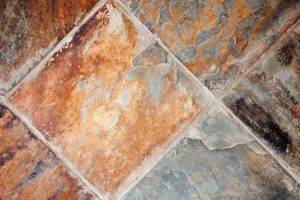 Walking into a tile store can be a bit overwhelming at times. With so many options and price points, it can be a struggle to know what’s best for your floor! Any type of stone tile is a great option for flooring because it is extremely durable and will add re-sell value to any home. Read on as Stoneworks Granite & Quartz dives into
Walking into a tile store can be a bit overwhelming at times. With so many options and price points, it can be a struggle to know what’s best for your floor! Any type of stone tile is a great option for flooring because it is extremely durable and will add re-sell value to any home. Read on as Stoneworks Granite & Quartz dives into  The kitchen is a place where friends and family gather. You spend a lot of time in your kitchen, so it’s important that the space not only nice to look at, but functional as well. Check out the points below and see if your kitchen applies. If it does, it may be time for you to start considering an update!
The kitchen is a place where friends and family gather. You spend a lot of time in your kitchen, so it’s important that the space not only nice to look at, but functional as well. Check out the points below and see if your kitchen applies. If it does, it may be time for you to start considering an update!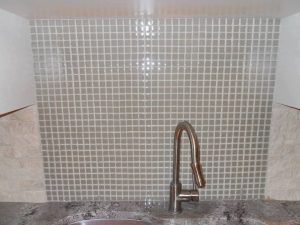 Let’s face it – life gets messy sometimes! Whether its grease in the
Let’s face it – life gets messy sometimes! Whether its grease in the 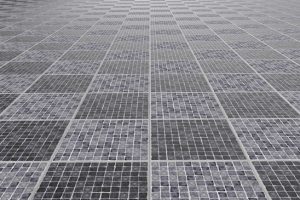 Tile floors have remained a popular choice for homeowners because they are durable, low maintenance and come in a wide array of styles. Once tiles are glazed, they have a protective barrier that keeps dirt, water, and stains from penetrating the tile. This makes tile a great choice for high traffic areas in your home! While tile floors are easy to maintain, it’s still important to know how to clean them properly to keep them looking like new for years.
Tile floors have remained a popular choice for homeowners because they are durable, low maintenance and come in a wide array of styles. Once tiles are glazed, they have a protective barrier that keeps dirt, water, and stains from penetrating the tile. This makes tile a great choice for high traffic areas in your home! While tile floors are easy to maintain, it’s still important to know how to clean them properly to keep them looking like new for years.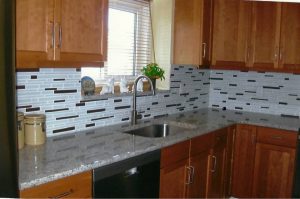 A backsplash is a great way to add personality to a bathroom or kitchen. Simple or complex, a
A backsplash is a great way to add personality to a bathroom or kitchen. Simple or complex, a 


